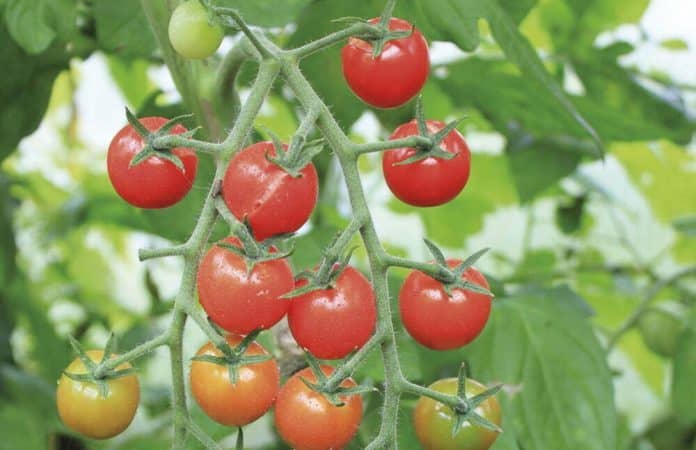Complained About Yellow Shoulders on Tomatoes to My Gardener Friend. He Gave Advice That Worked

Tomatoes grown in your own garden taste much better than those bought. That’s why most gardeners look after their seedlings from early spring. Sometimes things don’t go as they should, and the fruits appear unevenly. Why do tomatoes have a yellow collar?
The collar is the top part of the tomato from which the green stem protrudes. If there are problems with the crop, here are the tell-tale signs. A red tomato from the bottom while the top stays green or yellow? Find out what this could mean and how you can improve the condition of your plant.
Why do tomatoes have a yellow collar? There could be several reasons
Hey there! If you notice discoloration in your tomatoes, it’s important to find out as soon as possible where the problem occurred during cultivation. It’s so important to react quickly and effectively to help the fruit ripen. One of the main causes of yellow collars is a lack of potassium and magnesium. If there’s not enough of these elements in the soil, the tomatoes won’t ripen. Another common cause is a lack of water, which the plant can’t do without. This often happens when we give it too little water or water it badly.
Another cause of fruit discolouration can be heat shock: prolonged high temperatures and full sunlight cause overheating of the fruit and consequent ripening problems. Yellow collars may also be the result of a pest infestation or fungal disease. A weakened plant prevents growth and thus fruit ripening.
What can we do against yellowing tomatoes? Once you know the cause, you can easily eliminate it
To get the tomato back to its full potential, the factors that damage the tomato must be removed. With proper care, they will ripen quickly and you can enjoy a tasty harvest. What is important during the ripening process?
- Regular watering. The most important thing is to keep the soil evenly moist. Water the tomatoes early in the morning or late in the evening so that the water does not evaporate too quickly from under the bushes. Don’t let the soil overflow or dry out.
- Fertilizing. In order to provide the plant with the necessary macro and micro nutrients (especially nitrogen), it is important to supply it with the right nutrients. Banana peels or fresh yeast can make a valuable fertiliser at home .
- Sunscreen. If your tomatoes are growing in a sunny spot, give them shade. You can do this with special netting from garden centres.
- Protection against diseases and pests. If any of these problems occur, take appropriate measures to protect the plant.
TIP! If you notice pests on your tomatoes, make a homemade spray. Put a medium-sized onion and 6-7 cloves of garlic in a blender and cover with water. Blend and pour into a large container. Pour over a litre of water, mix well and leave in a dark place for 24 hours. After this time, strain the mixture and pour it into a spray bottle. Spray thoroughly all areas where pests have been detected. Repeat every 8-10 days.

